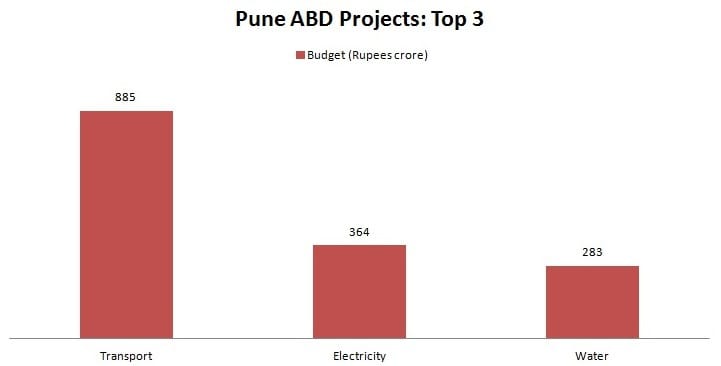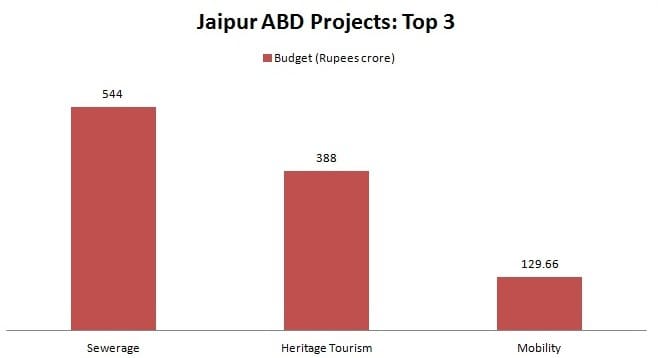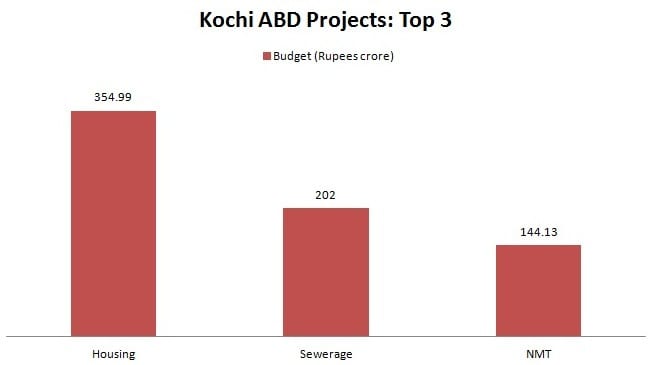Traffic congestion, waste management, economic inequality — issues such as these have been bogging down Indian cities. But attempting piecemeal, inefficient solutions means that problems have only worsened.
The ‘Smart Cities Mission’ (SCM) launched by Narendra Modi’s government in 2015 aimed at tackling urban issues. The concept was to make cities smart – to do more with less, to use existing resources efficiently and to build on them. As per the SCM, cities should provide citizens essential infrastructure, decent quality of life, sustainable environment, and also apply smart solutions.
Given the lofty objective, it is interesting to observe how the chosen cities are planning to achieve this and the projects that they have invested in to do so.
Overall thrust
Under the mission, the priority is to develop one area within the selected city into a ‘smart area’. This is called Area Based Development (ABD). The idea is that the smart area’s model will be replicated in other parts of the city over time.
Under ABD, a selected contiguous area within the city can be retrofitted (for area around 500 acres), redeveloped (50 acres) or used for greenfield development (250 acres).
Cities can also allocate a small part of the budget for IT-enabled pan-city solutions, to improve governance/public services.
Under the SCM, 100 selected cities will get Rs 500 cr from the centre and another Rs 500 cr from state government/ULB, over five years. Rest of the funds should be met through user charges, PPP, bonds etc. Thus, the centre will spend about Rs 50,000 cr on the Mission overall.
So far, 90 cities have been selected for the mission through four rounds, of which New Town Kolkata has since opted out of the scheme. The last round to select the final ten is awaited.
Do SCM projects meet cities’ needs?
The Mission had provided some loose guidelines to cities on the type of projects required for the smart area, under ABD. These include providing assured electricity and water supply, and smart metering for these. As cities suffer from water shortage, many experts have been recommending conservation measures. In line with this, the guidelines include rainwater harvesting (RWH), and recycling and reuse of water.
Green/renewable energy gets some importance too – of the electricity supply to the smart area, at least 10% should be solar; and in the case of redevelopment/greenfield development, at least 80% of the buildings should be green/energy-efficient. Energy-efficient street lighting is also included under ABD.
Transport management is also a major part of the guidelines. Indian cities have conventionally encouraged private transport through road widening, building flyovers etc, but of late, advocacy groups and citizens’ collectives have been pushing for better Non Motorised Transport (NMT, such as walking and cycling). In line with this, the guidelines mention encouraging NMT, pedestrian-friendly pathways and vehicle-free streets/zones.
Smart cities are also supposed to use IT for governance solutions. Intelligent traffic management, smart parking, providing WiFi access to the public, come under these. The guidelines also include innovative use of open spaces, citizens’ safety and solid waste management. Measures specifically targeted at the poor are few. One such provision is that, if housing is provided under greenfield development, at least 15% of it should be affordable.
The top five cities had been selected in January 2016, and each had formed SPVs (Special Purpose Vehicles) to implement the Mission in March 2016. Among these five, Bhubaneswar has the biggest budget, of around Rs 4500 cr. Budgets of the other four are only about half of this.
The cities largely follow the guidelines mentioned earlier; hence these broad themes are included in either their ABD or Pan-City plans. In the Smart City Proposals (SCPs) for all five, assured water supply and sewage management are major components. So are power infrastructure and supply, including setting up of solar, wind or biogas plants.
Cities also have many projects leveraging IT. In transport, all cities propose a common smart card for multiple transport modes. In some cases like Surat, the smart card can be used for other services like health and education too.
Some cities like Bhubaneswar have a Command and Control Centre that will collect and analyse data from multiple departments, for overall city planning and management. Most cities propose to create apps/websites for citizen’s engagement and grievance redressal. IT is also planned to be used in emergency response system, transport fleet management etc.
Smart budgeting: What do the top five prioritise?
In Bhubaneswar, about 90% (around Rs 4000 cr) of the budget is for ABD – to retrofit and redevelop 985 acres in the core city as ‘Bhubaneswar Town Centre District’. In developing this area, about half the budget goes into affordable housing, mainly for Janpath Government housing and four slums. Another major project is to develop Bhubaneswar Railway Station Multi Modal Hub at Rs 845 cr. The hub would integrate different modes of transport, and would have a new railway station building and a commercial-cum-residential complex etc.
Pune prioritises transport in its ABD project. It allocates around Rs 1700 cr (72% of the total budget) to develop the Aundh-Baner-Balewadi (ABB) area. Half this amount is reserved for transport, mainly public transport and NMT projects like Bus Rapid Transit (BRT), electric buses, revamping bus stops, pedestrian-friendly roads, non-motorised street, bicycles etc in the area. However, building and widening roads – which may encourage private vehicles – is also a major component under transport, with Rs 190 cr allocation. Among other projects, Rs 100 cr is allocated for riverfront development.
Jaipur largely prioritises tourism. About Rs 1250 cr (nearly two-thirds of the total budget) is to retrofit a part of Jaipur’s Walled City that houses many historic monuments. The biggest component within this, is sewerage at Rs 544 cr. Next comes smart heritage and tourism at Rs 388 cr, which includes projects like repurposing of heritage structures, redeveloping a heritage lake, facades etc.
Jaipur also plans to improve solid waste management for the entire city. Under its Pan-City projects, it has set aside Rs 388 cr for this, mainly for waste-to-energy plants.
Surat plans to develop its Textile Market area, which houses major textile markets, a fruit-vegetable market and Surat municipality’s General Hospital. Rs 1800 cr (70% of budget) is set aside for this. Like Bhubaneswar, Surat too reserves half of its ABD funds for affordable housing. Overall, 7750 affordable houses will be built — 2000 under Pradhan Mantri Awas Yojana (PMAY) and 5750 under Public Private Partnership. Surat also has restructuring of creeks as a major project, at Rs 200 cr.
Kochi prioritises developing basic infrastructure in the Fort Kochi-Mattancherry-Central City area. Rs 1350 cr (two-thirds of the budget) is reserved for this. Developing water transport, which already connects these areas, is a major part of the proposal. Buying boats, building a boatyard and command control centre, building a walkway from Ernakulam Jetty to Metro station are some projects under water transport. Redeveloping slums, markets etc at Rs 355 cr constitute the biggest ABD component. Kochi also allocates Rs 30 cr for a tourism master plan of the area, and another Rs 40 cr to upgrade government hospitals.
While the objectives are lofty, it would also be interesting to explore how far these have progressed and the implementation on the ground. In part 2 of this story, we will look at that.




